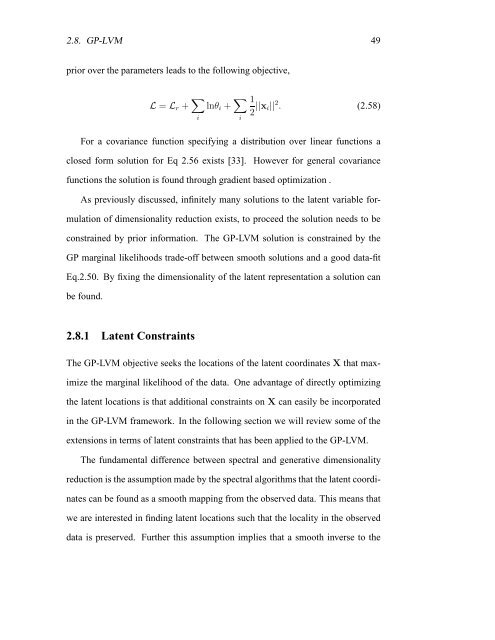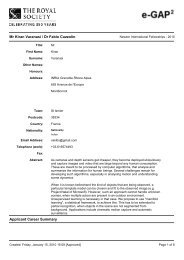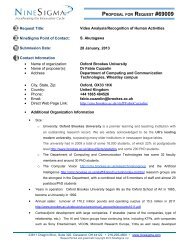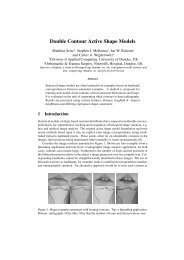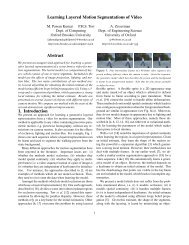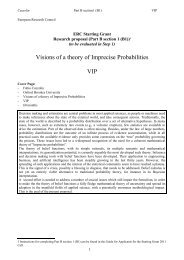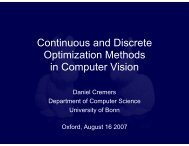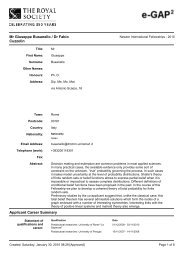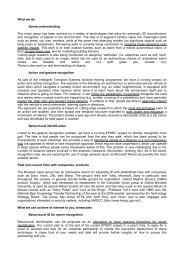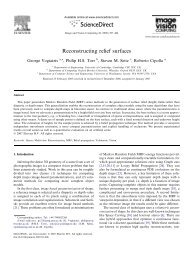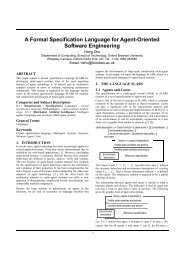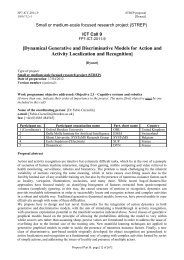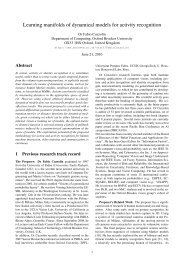Shared Gaussian Process Latent Variables Models - Oxford Brookes ...
Shared Gaussian Process Latent Variables Models - Oxford Brookes ...
Shared Gaussian Process Latent Variables Models - Oxford Brookes ...
Create successful ePaper yourself
Turn your PDF publications into a flip-book with our unique Google optimized e-Paper software.
2.8. GP-LVM 49<br />
prior over the parameters leads to the following objective,<br />
L = Lr + <br />
lnθi + 1<br />
2 ||xi|| 2 . (2.58)<br />
i<br />
For a covariance function specifying a distribution over linear functions a<br />
closed form solution for Eq 2.56 exists [33]. However for general covariance<br />
functions the solution is found through gradient based optimization .<br />
As previously discussed, infinitely many solutions to the latent variable for-<br />
mulation of dimensionality reduction exists, to proceed the solution needs to be<br />
constrained by prior information. The GP-LVM solution is constrained by the<br />
GP marginal likelihoods trade-off between smooth solutions and a good data-fit<br />
Eq.2.50. By fixing the dimensionality of the latent representation a solution can<br />
be found.<br />
2.8.1 <strong>Latent</strong> Constraints<br />
The GP-LVM objective seeks the locations of the latent coordinates X that max-<br />
imize the marginal likelihood of the data. One advantage of directly optimizing<br />
the latent locations is that additional constraints on X can easily be incorporated<br />
in the GP-LVM framework. In the following section we will review some of the<br />
extensions in terms of latent constraints that has been applied to the GP-LVM.<br />
The fundamental difference between spectral and generative dimensionality<br />
reduction is the assumption made by the spectral algorithms that the latent coordi-<br />
nates can be found as a smooth mapping from the observed data. This means that<br />
we are interested in finding latent locations such that the locality in the observed<br />
data is preserved. Further this assumption implies that a smooth inverse to the<br />
i


